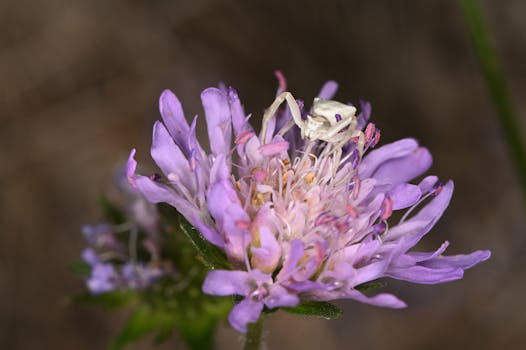
**
Insect Ingestion: A Silent Threat to Aircraft Efficiency and Safety
Insect strikes, often overlooked, pose a significant threat to aircraft efficiency and safety. While dramatic bird strikes frequently grab headlines, the cumulative effect of countless smaller insect impacts represents a substantial, often underestimated, challenge to the aviation industry. This article delves into the hidden costs and risks associated with insect ingestion by aircraft engines, exploring mitigation strategies and the latest research in this critical area.
The Hidden Cost of Insect Strikes: Beyond Engine Damage
The impact of insects on aircraft isn't limited to catastrophic engine failures, though such events are certainly possible. More commonly, insect ingestion causes:
- Reduced Engine Performance: Insect debris can clog engine components, leading to decreased thrust and fuel efficiency. This results in increased fuel consumption, higher operating costs for airlines, and a larger carbon footprint.
- Increased Maintenance Costs: Regular engine cleaning and repairs become necessary, adding significant expense to the airline's budget. The frequency of these maintenance checks increases exponentially during peak insect seasons.
- Component Degradation: Repeated insect impacts, even those seemingly insignificant, contribute to the gradual deterioration of engine components, shortening their lifespan and increasing the likelihood of more serious failures down the line.
- Flight Delays and Cancellations: In severe cases, insect ingestion can force emergency landings, leading to costly delays, passenger inconvenience, and potential reputational damage for airlines.
Peak Insect Season: A Time of Increased Risk
The severity of insect strikes varies drastically depending on the time of year and geographical location. Peak insect season, which often coincides with warmer months, sees a dramatic increase in the number of insects in the air. This makes flight operations considerably riskier, particularly for low-flying aircraft and those operating near wetlands, agricultural areas, and forests. Keywords like insect strike prevention, aircraft engine maintenance, and aviation safety highlight the increasing concern surrounding this issue.
Geographical Impact: Hotspots and Seasonal Variations
Specific geographic regions experience significantly higher insect densities than others. Areas with abundant vegetation, standing water, and favorable climatic conditions for insect breeding are particularly vulnerable. Understanding these insect hotspots is crucial for proactive risk management. Airlines operating in these high-risk zones require specialized strategies to mitigate the impact of insect ingestion. For instance, detailed insect strike maps could inform flight planning and scheduling, potentially helping avoid high-risk zones during peak activity periods.
Mitigation Strategies: From Advanced Engine Design to Improved Forecasting
The aviation industry is constantly exploring innovative solutions to combat the threat of insect ingestion. These strategies include:
- Advanced Engine Design: Researchers are developing more resilient engine components capable of withstanding increased insect impacts. This includes incorporating materials that are less prone to damage and employing improved filtering systems to minimize the ingress of foreign objects.
- Insect Monitoring and Forecasting: Sophisticated monitoring systems, combined with advanced weather models, can predict periods of high insect activity. This allows airlines to adjust flight schedules, routes, and altitudes to minimize the risk of encountering high concentrations of insects. The development of accurate insect density prediction models is key to improving preventative measures.
- Improved Detection Systems: Real-time detection systems integrated into aircraft engines can provide early warnings of potential insect strikes, allowing pilots to take preventative measures. This technology is crucial for minimizing the risk of catastrophic engine failures.
- Enhanced Pilot Training: Pilots need comprehensive training on identifying and responding to potential insect ingestion events. This includes understanding the impact on engine performance and the appropriate emergency procedures.
The Role of Technology and Research: Addressing the Challenge
Research and technological advancements are paramount in mitigating the threat of insect ingestion. The development of more effective insect repellent systems, improved engine design incorporating damage-tolerant materials, and sophisticated predictive models are all crucial areas of ongoing investigation. Furthermore, interdisciplinary collaboration between entomologists, engineers, and aviation professionals is essential to developing comprehensive solutions.
The Future of Flight Safety: A Holistic Approach
The issue of insect ingestion is no longer a niche concern within the aviation industry. It is a critical safety and efficiency issue that demands a holistic approach. By investing in cutting-edge research, developing proactive mitigation strategies, and fostering collaborative efforts, the aviation industry can significantly reduce the risks and costs associated with insect strikes. This includes enhancing communication and data sharing between airlines, research institutions, and regulatory bodies, facilitating the creation of a global network focused on improving aviation safety and efficiency. The ultimate goal is not only to reduce the impact of insect strikes but also to incorporate these insights into the broader context of aviation environmental sustainability by understanding how to better manage the risks while minimizing environmental impacts. The continued development of technologies like advanced radar systems and improved sensor technologies will play a crucial role in achieving this goal. The focus should be on a combination of predictive technologies and improved engineering solutions to reduce the negative impacts of insects on aircraft.




















